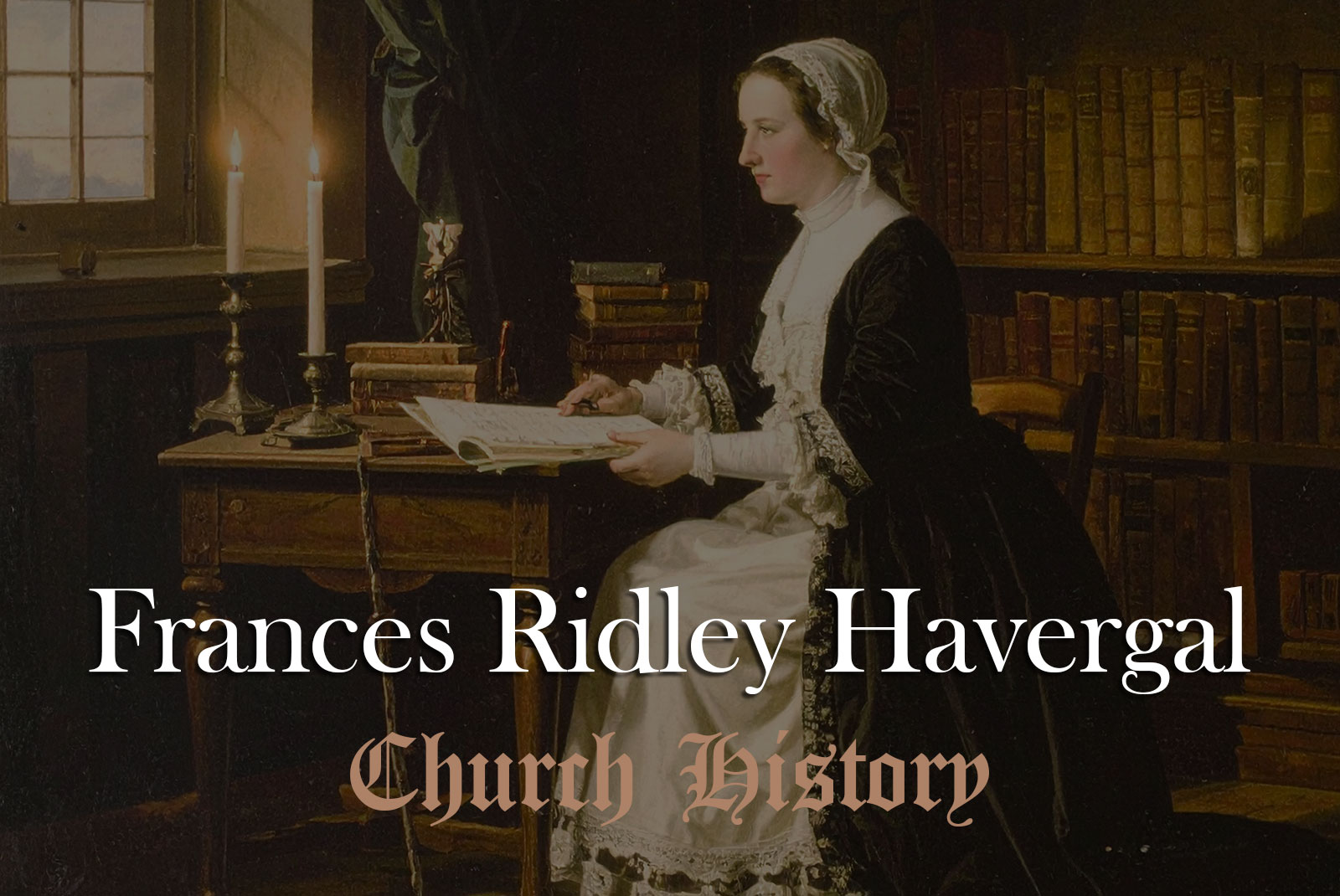
Frances Ridley Havergal was an author and hymn writer in the 1800s who is best known for her hymn “Take my life and let it be, consecrated, Lord, to Thee” (first known as “The Consecration Hymn”). Through her life, she sought to live the truths in that hymn.
Frances was born in 1836 in England, the youngest child three sisters and two brothers. Her mother died when she was young and her father eventually remarried to a woman Frances called “my loved mother”. Frances’s father was a vicar and she grew up attending church and reading the Bible; at 14, she became a Christian.
Her middle name, Ridley, was after Nicolas Ridley, an ancestor of the family, who was martyred during the reign of Queen Mary. Frances loved her name, saying:
“But ‘what the R. doth represent’
I value and revere,
A diamond clasp it seems to be,
On golden chains, enlinking me
In loyal love to England’s hope,
The Church I hold so dear.”
Frances was a quick student with a special gift for languages; she learned to read by the age of three, and picked up languages by listening to her siblings’ lessons. She studied Hebrew and made a particular study of the Psalms. She also learned Greek so that she could study the New Testament in its original language. She did not study for knowledge’s sake, but to know God better, glorify Him more, and teach others to know Him more.
Her greatest love was Scripture and she read and studied it frequently. Together with one of her closest friends, Elizabeth Clay, she memorized large portions of the Bible. She eventually knew all the gospels, the Epistles, Revelation, the Psalms, Isaiah, and the Minor Prophets by heart. She would also make important biblical passages, such as the fruit of the Spirit, subjects of her morning meditation and prayer.
Through her life, Frances found ways to serve God by caring for the eternal and temporal needs of the people around her. One of her first projects was the Flannel Petticoat Society to provide clothing of poor children. She also wrote books for children and began a Bible class for working people. Over the years, Frances supported various missions, including the Irish Society which provided Bibles and biblical teaching for the people of Ireland. The line “Take my silver and my gold” in “Take My Life” was fulfilled when she gave her many pieces of jewelry to the Church Missionary Society to be used for evangelizing the lost.
Eventually Frances found her life’s work in writing poems, hymns, and devotional books, and is now best known for her hymns, many of which are still sung by believers around the world. Her desire was to write beautiful and memorable words paired with good music, but thought it even more important that they clearly expressed biblical truths. She often attached Scripture to her songs, giving her hymn “Without Christ,” which is based on Ephesians 2:12, a Scripture reference for each of its one hundred and twelve lines.
Among her many hymns are “I Gave My Life for Thee,” inspired by a picture she saw in Germany showing Christ on the cross; “A Worker’s Prayer,” written for lay helpers in the church; “Like a River Glorious,” penned when she was living by the River Severn and inspired by Isaiah 66:12, and “Who is on the Lord’s Side,” taken from Exodus 32:26.
Frances never married and lived with her parents or her sisters until her death. Through her life, she suffered from various severe illnesses that caused her to be unable to serve or work for long periods of time as she recovered. Despite this, she was known as a warm, cheerful Christian who loved to share the truth with everyone she could and who served her Lord faithfully.
Frances spent the last months of life with her sister Maria caring for her in her final illness. At the end, Frances asked her doctor if he thought she was really going “today,” and he answered “probably.” She said, “Splendid to be so near the gates of heaven.” She asked that the words of 1 John 1:7— “The blood of Jesus Christ his Son cleanseth us from all sin”—be put on her tombstone. Frances died on June 3, 1879. Among her last words were “I did so want to glorify Him.” Throughout her life, she sought to tell everyone she could about her Savior, and even now in her hymns she is still teaching people to know and glorify God.
by Miss Dorothy
